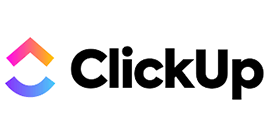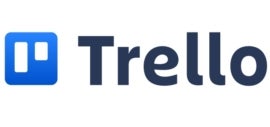
In the dynamic world of creative teams, project management software is not just a tool — it’s a game-changer. It’s the difference between chaos and order, missed deadlines and timely projects. It’s the bridge that connects ideas with execution, helping creative teams streamline their workflows, collaborate effectively and bring their visions to life. Whether you’re a design agency, a marketing team or a group of developers, the right project management software can be a valuable investment for your business.
The right project management tool will significantly enhance a creative team’s productivity and efficiency. Here’s how our top six popular project management tools compare, as we highlight their unique features, pros, cons and pricing.
| Kanban boards | Native time tracking | Customizable workflows | Built-in Agile features | Pricing | |
|---|---|---|---|---|---|
| ClickUp | Yes | Yes | Yes | Yes | Starts at $5/user/month |
| monday.com | Yes | Yes | Yes | No | Starts at $8/user/month |
| Jira | Yes | No | Yes | Yes | Starts at $3.49/user/month |
| Trello | Yes | No | Yes | No | Starts at $5/user/month |
| Notion | Yes | No | Yes | No | Starts at $8/user/month |
| Asana | Yes | Yes | Yes | No | Starts at $10.99/user/month |
Jump to:
ClickUp is an ideal project management tool for remote creative teams. Its comprehensive set of features, including customizable views for tasks, goal tracking and robust integrations, make it easy for distributed teams to stay aligned and productive. Whether your team is working on design projects, content creation or any other creative endeavor, ClickUp’s features can be customized to fit your team’s unique workflow, making remote work more efficient and effective.
In addition to a free plan, ClickUp offers four premium tiers: Unlimited, which costs $5 per user per month when billed annually, or $9 billed per user billed monthly; Business, which costs $12 per user per month billed annually, or $19 per user billed monthly; and Business Plus, which costs $19 per user per month when billed annually, or $29 per user billed monthly. The Enterprise plan requires you to contact ClickUp for a custom quote.
Figure A

For more information, read the full ClickUp review.

Jira is a project management tool that is best suited for creative teams that follow Agile methodologies. Whether you’re a software development team working on a new app or a marketing team using Agile methodologies to manage your campaigns, Jira’s Agile boards, customizable workflows, extensive reporting features and integrations with other Atlassian products can augment your project processes.
Jira has a free plan for up to 10 users. But for larger teams using a monthly subscription, the Standard plan costs between $3.49 and $7.75 per user per month, and the Premium plan is between $5.72 and $15.25 per user per month. They also offer an Enterprise plan that’s billed annually, though you would have to request a quote.
Figure C

For more information, read the full Jira review.

Trello is a project management tool that excels in visual project management. Its card-based design makes it easy for creative teams to visualize tasks and their progress. You can use Trello to coordinate a design project, manage a content calendar, track a marketing campaign and more, as Trello’s card-based task management, built-in automation with Butler and Power-Ups for integration with other tools all make it easy to enhance your creative process.
Trello includes a free plan, but its premium pricing starts with the Standard plan, which is priced at $5 per user per month, billed annually, or $6 per user if billed monthly. Its Premium plan costs $10 per user per month if billed annually, or $12.50 if billed monthly. And its Enterprise plan costs between $7.38 and $17.50 per user per month when billed annually. For a team of 50 users, Enterprise costs $17.50 per user per month when billed annually.
Figure D

For more information, read the full Trello review.

Notion is a project management tool that is best suited for creative teams that need an all-in-one workspace. It combines notes, tasks, wikis and databases to offer an extensive project management solution. Notion’s all-in-one workspace, customizable templates and integrations with popular tools can help keep not only one creative team but different kinds of creative teams organized and productive.
When billed monthly, with the exception of the free plan, Notion’s Plus and Business plans respectively cost $8 and $15 per user per month, billed annually. When billed monthly, they cost $10 and $18 per user. Notion’s Enterprise pricing information is available upon request.
Figure E

For more information, read the full Notion review.

Asana is a project management tool that is best suited for creative teams that need to manage cross-team collaboration efforts. It offers robust features for project and task management, making it easy to connect complex work across teams. Asana’s project and task management platform features timeline, board and list views, and integrations with over 200 tools that can improve the productivity of your creative teams.
Asana has a free Basic plan with limited features. Its paid plans include the Premium plan, which costs $10.99 per user per month, billed annually, or $13.49 per user billed monthly; and the Business plan, which costs $24.99 per user per month, billed annually, or $30.49 per user billed monthly. This is all alongside an Enterprise plan; pricing information is available for this plan upon request.
Figure F

For more information, read the full Asana review.
Creative project management software is designed with features that cater specifically to the needs of creative teams. Features such as Kanban boards, time tracking, customizable workflows and Agile capabilities help streamline workflows, enhance collaboration and manage tasks effectively.
Kanban boards provide a visual representation of your workflow, making it easy to see the status of different tasks at a glance. Each task is represented by a card that moves from one column to the next as it advances through the workflow. This feature is particularly useful for creative teams, as it allows them to visualize their work, keep track of tasks and identify bottlenecks in the workflow.
Time tracking is a crucial feature for creative teams. It allows you to track how much time your team spends on each task, providing insights into productivity and helping with project planning and budgeting. With time tracking, you can ensure that your team is spending their time effectively while identifying areas to improve efficiency.
Every creative team has a unique workflow, and the best project management software allows you to adapt your workflow to satisfy your team’s needs. Regardless of the project, customizable workflows allow you to tailor the software to your team’s specific processes and ways of working.
Agile features are particularly useful for creative teams that find value in Agile methodologies. These features, which include Scrum boards, sprint planning tools and burndown charts, help teams manage their work in iterative cycles, adapt to changes quickly and deliver work incrementally. Agile features can help creative teams work more flexibly and respond more effectively to changes in project requirements.
Working with creative project management software offers several benefits, including the following:
These project management tools help to make your team more efficient, as they automate routine tasks, reduce the need for manual data entry and make it easier to manage and track tasks.
Creative project management software provides a centralized platform for collaboration and communication. Team members can easily share files, discuss tasks and collaborate on work, even if they’re working remotely.
Creative project management software gives you complete visibility into your team’s work. You can see who’s working on what, track progress on tasks and get a clear overview of your projects.
With features like time tracking and task management, you can plan your projects more accurately. Specifically, you can estimate how long tasks will take, schedule work effectively and avoid overloading your team.
For this comparison, we tested the products on this list and combined our experience with research on individual product features, pros, cons and verified user reviews.
Choosing the right project management tool for your creative team depends on your team’s specific needs and workflow. Consider your team’s size, the complexity of your projects, your budget and the specific features your creative team needs. If your team uses Agile methodologies, for example, you might want a tool with strong Agile features. If your team works remotely, look for a tool with strong collaboration features. By considering these factors, you can choose the creative project management tool that best fits your team’s needs.
Wrike is the ultimate solution for managing projects.
Discover the power of Wrike’s award-winning project management software. Maximize productivity using Gantt charts, Kanban boards, and calendars. Streamline resource allocation, drive team alignment, and enhance forecasting. Benefit from AI-driven automation to save time on admin. Deliver impressive results, hit deadlines, and stay within budgets while elevating your team’s performance.
Resource Guru is the fast, flexible way to schedule teams and keep projects on track. Get full visibility of who’s available and who’s overworked, so people and projects succeed in harmony. Assign work, balance workloads, and edit schedules in seconds. Keep your team up-to-date with personal dashboards and daily schedule emails. Analyze utilization rates, clients, and projects for more accurate forecasts and budgets. Trusted by companies including NASA and L’Oreal. Try it free for 30 days!
WorkOtter is the #1 ranked SaaS project, resource, and portfolio management solution. WorkOtter is disrupting PPM with features, world class support, and visual dashboards that make your PMOs look brilliant.
monday.com Work OS is the project management software that helps you and your team plan, execute, and track projects and workflows in one collaborative space. Manage everything from simple to complex projects more efficiently with the help of visual boards, 200+ ready-made templates, clever no-code automations, and easy integrations. In addition, custom dashboards simplify reporting, so you can evaluate your progress and make data-driven decisions.